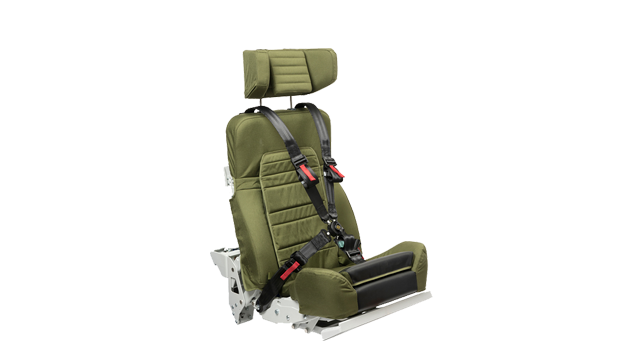STANAG 4569: Ensuring Adequate Ballistic and Blast Resistant Protection
Blog

Ergonomic seats to all
Military seats within combat vehicles are purposed to serve their operators performing their missions for long hours and occasionally under extreme conditions, therefore they are necessarily designed to comply with commonly used Human Engineering and Ergonomics Standards to ensure maximum comfort and reduced fatigue – a hallmark of discomfort.
These two terms, comfort and discomfort, were considered by Helander and Zhang (1997) as two separate entities with discomfort having a dominant effect.
A model of sitting comfort and discomfort was developed by De Looze, Kuijt-Evers, and Van Dieën (2003) and was based on the interaction between three arguments: seat and the human within a certain context.
Where:
Human refers, in our case, to anthropometric data of the combat soldiers:
Seat refers to different characteristics such as shape, dimensions, and material.
And context refers to occupant’s activity profile such as driving, ranging, or even lack of any activity.
According to their model, the relationship between human, seat, and context characteristics and the perception of comfort and discomfort can be explained by three mediating variables: posture, pressure, and movement.

Seat refers to different characteristics such as shape, dimensions and material.
And context refers to occupant’s activity profile such as driving, ranging or even lack of any activity.
According to their model the relationship between human, seat and context characteristics and the perception of comfort and discomfort can be explained by three mediating variables: posture, pressure, and movement.
Studies have already reported a correlation between anthropometry and interface pressure while others have found effects between anthropometry and contact area.
The correlation between contact area an interface pressure is quite intuitive, furthermore multiple points of contact may help also reducing body fatigue.
Quite a few studies discovered associations between seat dimensions or seat shape and interface pressure.
Mergl (2006), who defined the ideal pressure distribution for car driver’s seats showed that comfort is rated high when there is an ideal pressure distribution under the legs and buttocks, namely 24.5–28.5% of the total load for both left and right buttocks, less than 14% of the total load for the thighs and less than 3% of the total load for the front of the thighs. The shape of the seat pan can contribute to this ideal pressure distribution.
Here is an interesting way to increase the contact area in military seats serving soldiers in a wide range of sizes, from the 5th percentile to the 95th percentile.